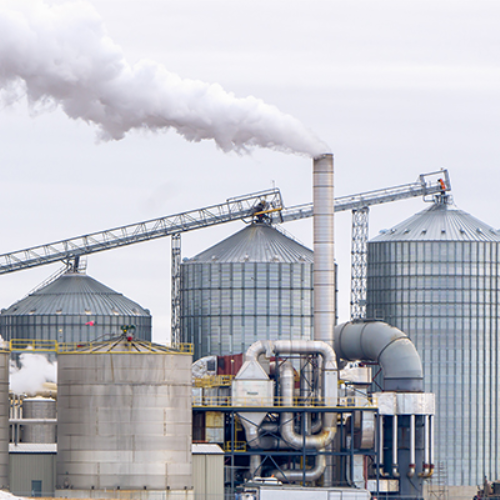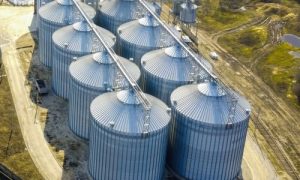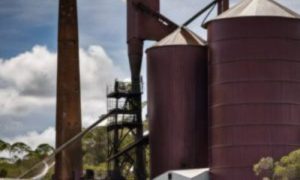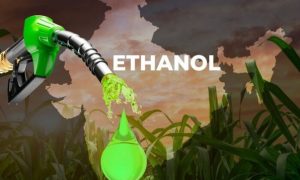Ethanol industry calls for carbon capture support following economic study

Iowa’s renewable fuels industry lost $800M in economic impact in 2024, citing stagnant corn demand and falling prices. The Iowa Renewable Fuels Association urges access to low-carbon ethanol markets and year-round E15 to boost demand. Debate intensifies over carbon capture pipelines, seen by some as essential to ethanol’s future, but opposed by critics over land and safety concerns.
The economic impact of the renewable fuels industry in Iowa was $800 million less in 2024 than it was in 2023, according to a recent study released by Iowa Renewable Fuels Association.
The industry association said “stagnant corn demand” has impacted biofuels’ impact on Iowa’s economy, and said the best way to increase demand is entry to the ultra-low carbon ethanol markets.
“That is the most cost-effective and impactful tool we can provide our farmers and producers,” Monte Shaw, IRFA executive director, said in a statement.
IRFA holds that the direct impacts of biofuels “remain strong” in the state, with another “record for fuel production.”
Overall, the report found the renewable fuel industry accounted for 2% of Iowa’s 2024 gross domestic product, or $5.7 billion. The industry also created more than 34,000 direct and indirect jobs across the state, which is down from 52,000 jobs in 2023.
Shaw said some of the change comes from completed construction projects and a closed facility, but the majority of that figure is from the indirect impacts of the stalled market.
“The bigger thing is those multiplier effects,” he said. “When you’re buying corn at $7, that income goes over in the economy and supports jobs and other aspects of Iowa’s economy … When farmers don’t have money, they’re not out buying new equipment, they’re gonna make stuff last another year, and so that is where those job losses have happened.”
Shaw said if the numbers are to increase across the economy, the overall demand for ethanol needs to increase.
Right now, he said the supply outweighs demand for corn and soybean commodities, which has led to decreasing corn prices over the past two years. The trend is projected to follow suit for the 2024-2025 crop year.
“Our farmers are very productive, very competitive … they’re producing more corn with fewer inputs on the same acres,” Shaw said. “But we have not been able to build demand fast enough.”
Ryan Sauer, vice president of market development for Iowa Corn Growers Association, said if the current trends continue and Iowa doesn’t branch into new markets to utilize corn, there could be “a bit of a repeat” of the farm crisis from the 1980s.
“You’ve got commodity prices that are going to stay stagnant, you’ve got input prices that will remain high, and I mean, there’s only so long that the banks can allow a farmer to do that,” Sauer said.
One route for increased demand could come from the congressional approval of nationwide, year-round, E15, or a blend of ethanol fuel with 15% ethanol.
According to studies from the National Corn Growers Association, a 5% increase in ethanol blends, which E15 would represent, equates to an increased demand of 2.3 billion bushels of corn annually. The IRFA study found that 62% of corn in Iowa is processed by the ethanol industry.
Sauer said the E15 market would be especially important for Iowa farmers if tariffs upset corn export markets.
“If we’re not going to be able to export it because of tariffs and all this, we need all the demand domestically we can get, and E15 will allow us to do that,” Sauer said.
Low carbon markets
Iowa Renewable Fuels Association has also been pushing for year-round E15, but Shaw called it a “near-term market.”
“All the other market growth opportunities that we see on the horizon are low carbon, ultra-low carbon markets,” Shaw said. “That’s why we’re fighting so hard … to make sure that our ethanol producers have the tools they need to produce ultra-low carbon ethanol.”
Shaw said sustainable aviation fuel, or SAF, is one of the ultra-low carbon fuels the industry hopes to expand to, but there is also demand for fuels in the marine industry, trains and for some construction and tractor equipment.
The study said ethanol producers would have to “lower the carbon intensity” of ethanol production in order to open up the market for SAF.
“This is most easily achieved through environmentally friendly feedstock production practices and access to opportunities for carbon capture and sequestration of carbon dioxide from ethanol production,” the study said.
The industries purchasing these fuels want them to be produced with lifetime greenhouse gas emissions below a certain level. Some iterations of guidance for sustainable aviation fuel, for example, required the fuel to be made from corn grown with carbon reducing farming practices.
Shaw said being able to reduce carbon emissions via carbon capture and sequestration, like the controversial Summit Carbon Solutions pipeline, would equate to “tens of billions of gallons” of additional biofuel demand over the next 20 years.
“Do you want to be sitting here around $3.50 corn, and having a bad farm economy?” Shaw said. “Or, do we want to access these new markets that will literally say, ‘Give me every gallon you can?’”
The Summit pipeline, and the now terminated Wolf Carbon Solutions pipeline, has drawn opposition from landowners, some politicians and environmental groups like the Sierra Club.
Those opposed to the project believe carbon sequestration pipelines are dangerous for communities, often citing a rupture of a pipeline in Satartia, Mississippi. Landowners oppose the taking of easements in agricultural land for the pipeline, especially after the Summit project was conditionally granted the right of eminent domain in June.
The issues have been a prominent topic of discussion at the Iowa Capitol this session. The House voted to ban the use of eminent domain on carbon sequestration pipelines, and more recently a group of senators vowed to stand their ground on budget negotiations until the pipeline issue is debated in the chamber.
Emma Schmit, pipeline fighters director with Bold Alliance, said the “unyielding commitment to carbon capture pipelines” is what’s holding the biofuels industry back.
“To imply stagnation suddenly has the industry on death’s door unless a risky carbon capture pipeline is allowed to destroy over 1,000 miles of prime Iowa farmland is a stretch,” Schmit said in an email.
She referenced figures in the study showing another high year for ethanol production, and that corn utilization by the industry has remained consistent.
“If expanding markets via decarbonization is the goal, there are a multitude of options available that don’t depend on the destruction of thousands of parcels or the misuse of eminent domain,” Schmit said.
According to Summit Carbon Solutions, the project has already secured easement agreements for more than 75% of the route for the first phase of the pipeline.
Construction on the pipeline cannot begin until the company has secured permit approval in South Dakota, a process which has been complicated by the state’s recent ban on eminent domain for CO2 pipelines and subsequent denial of the permit application from Summit. The company has pledged to reapply with reduced scope in the state.
The project could face a similar situation in Iowa if lawmakers advance the bill passed from the House, though substantial amendments to the bill have been proposed in the Senate.
Shaw said without carbon sequestration capabilities, Iowa could lose its title as “most cost-effective place to turn corn into ethanol,” in favor of nearby Nebraska, where a roughly 400-mile carbon dioxide sequestration pipeline through the state is set to be operational by the end of 2025.
“People are treating this like it’s some sort of political board game, and they’re ignoring the very real ramifications that are happening around us,” Shaw said.
To Read more about Ethanol Industry & Bio Energy News, continue reading Agriinsite.com
Source : Southernminn.com
















